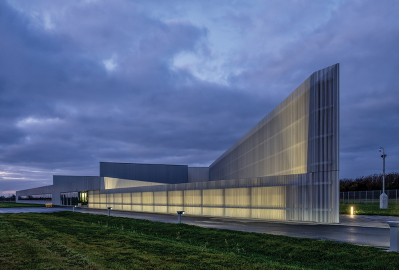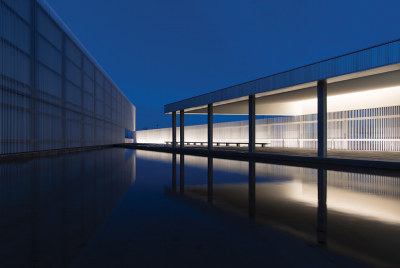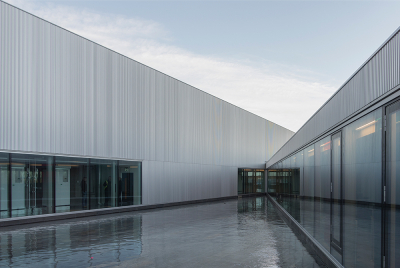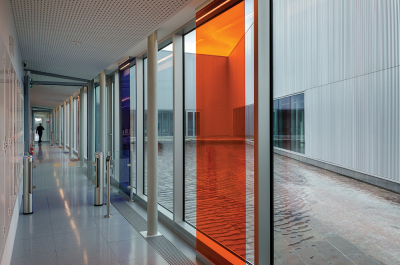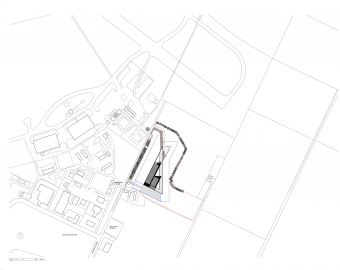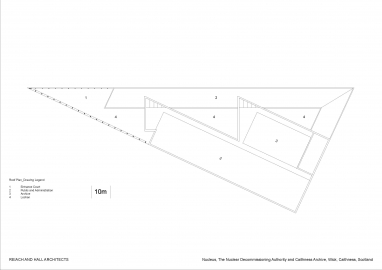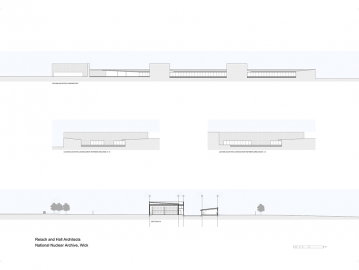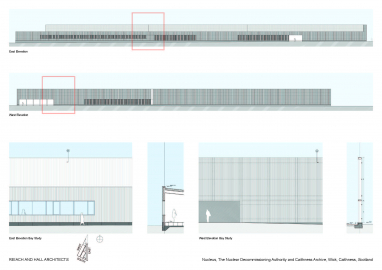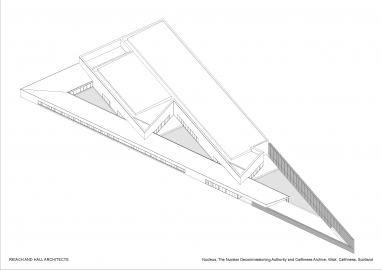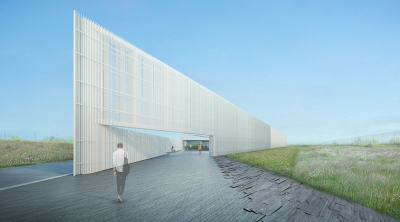Nucleus, The Nuclear Decommissioning Authority and Caithness Archive
Nucleus is an archive for the Nuclear Industry & Caithness. With archival spaces, doc retrieval & processing areas, admin & public spaces, a community room & exhibition area. It will contain 30million digital records and 28K linear metres of paper & photographic records concerning the development and decommissioning of the UK’s civil nuclear industry.
The brief was essentially a large shed with admin offices similar to an out of town industrial estate. The design tries to transform this ubiquitous building type into a building that responds to its northern location & cultural significance while using the material language & economy of the shed. An ambition of the design was to open the building up to the public both in terms of accountability & community use. The building must welcome the local, expert & visitor alike - the entrance sequence plays a huge part in this ambition.
The design responds to this vast wild landscape with a bold & simple strategy. The design imagines a singular low triangular form that enters into a dialogue with the landscape not by merging with it but by quietly standing apart from its immediate context, maintaining a dignified & enigmatic presence.
The two basic functions of the building, to preserve archive material and to enable access to it, can be read clearly in the construction and form of the building; a massive double height cellular concrete construction layered with a double skin roof contains the repository accommodation. Its inherent mass providing environmental stability and security. In contrast, the single storey public and ancillary accommodation is housed within a light filled open plan enfilade wing of light weight construction.
The prismatic building plan is organised along a north south axis that strings together a sequence of shallow lochans. The perforated plan separates the low lying form containing the public and archivist spaces from the massive archive spaces which align with the western site boundary. The single storey wing faces north east with clear views towards the coastline and the horizon. The two generic building masses mesh around the lochans, forming a series of protected water courts.
The building is clad in extruded silver anodised ribbed cladding and vertical louvres, these finely ‘’drawn’’ facades respond to the subtle changes of light that is experienced throughout the day in this northern territory.
The orientation and relationship between the archive block and low level ancillary accommodation are key to the sustainable approach of the design’s passive heating and ventilation systems. The string of courtyards as well as forming an articulation between the double height archive block and low level accommodation importantly act as lightwells, bringing daylight and natural ventilation into what is essentially a deep plan building.
At a more fundamental level the lochans serve to mark this building as being part of a much bigger idea of landscape and light.

